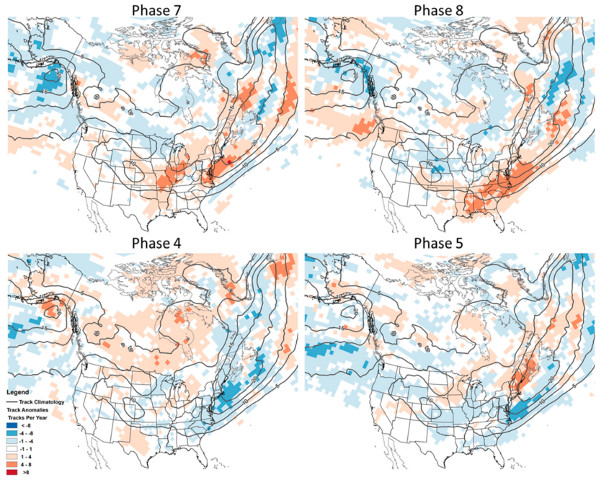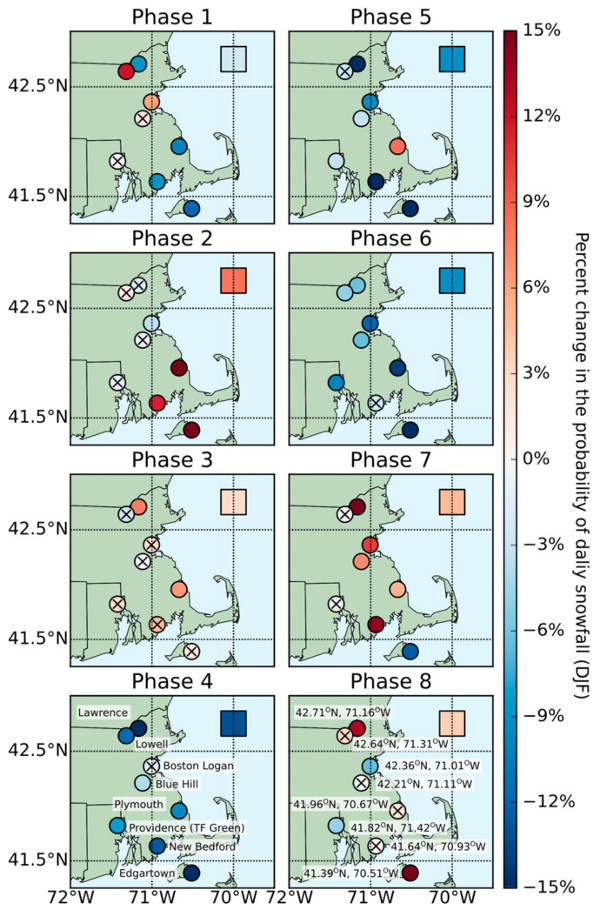|
Abstract: The winter of 2014/15 brought record snow totals to portions of southeastern New England. Additionally, over 90% of Boston Logan Airport snowfall during the winter fell during phases 7 and 8 of the Madden–Julian oscillation (MJO) index. This motivated Klotzbach et al., Monthly Weather Review, 2016 to investigate potential connections between intense southeastern New England snowstorms and the MJO in the historical record. It was found that southeastern New England snowfall, measured since the 1930s at several stations in the region, recorded higher than average winter snowfalls when enhanced MJO convection was located over the western Pacific and the Western Hemisphere (phases 7–8). Similarly, snowfall was suppressed when enhanced MJO convection was located over the Maritime Continent (phases 4–5). The MJO also modulates the frequency of nor’easters, which contribute the majority of New England’s snowfall, as measured by reanalysis-derived cyclone tracks. These tracks were more numerous during the same MJO phases that lead to enhanced snowfall, and they were less common during phases with less snowfall.
|

